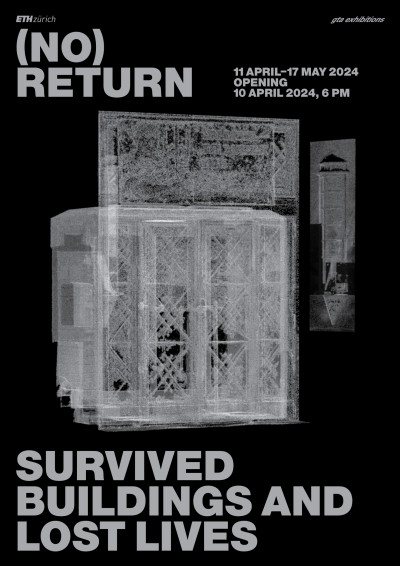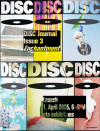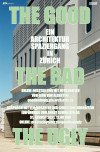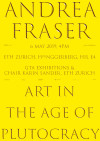
(No) Return
Survived Buildings and Lost Lives
An exhibition by Myroslava Liakhovych in collaboration with Pan Hu and Meghan Rolvien
11 April–17 May 2024
gta exhibitions, Foyer, ETH Zurich, Hönggerberg
Opening: 10 April 2024, 6 pm, with a welcome by Myroslava Liakhovych with Laurent Stalder, Daria Ozhyhanova, Orkun Kasap, Pan Hu and Meghan Rolvien, Fredi Fischli and Niels Olsen
Guided tour of the exhibition Beverly Buchanan. I Broke the House at 5 pm
“Cities survive the peoples to whom they owe their existence and the languages in which their builders spoke.“
From Lemberg: Die Stadt, 1924, Joseph Roth, born in Brody (today’s Lviv region, Ukraine)
Interwar modernist architecture embodied ideas about a better life that was anticipated after the First World War, especially in newborn states in central-eastern Europe like the Second Polish Republic, founded in 1918. Lwów, a city in the eastern Polish borderlands (today’s Ukrainian city, Lviv), was the centre of urban avant-garde experiments, which combined international style and local architectural approaches. In the 1920s and 1930s, the city’s multi-ethnic community was seeking to express itself and trying to find unity through modernist architecture, leaving traditional ways of life behind. Many architectural projects – office buildings, schools, hospitals and housing – took shape one after the other in the city. However, the mood changed dramatically in the second half of the 1930s, with Europe slipping into the abyss of fascism, totalitarianism and anti-Semitism and facing another world war. People were going to work and returning to their comfortable modernist homes in fear of a catastrophe, which erupted in September 1939 when after the German invasion of Poland, the Soviet Union occupied Lwów. Almost all the people who were living in these modernist houses were forced to leave and, in the worst cases, deported to Siberia. The dream of a comfortable and happy future came to an abrupt end. After the war, 90 percent of the city’s population was lost: Polish people were resettled, Jewish people were killed by the Nazis, and Ukrainian people were deported or killed by the Soviets. Only buildings were left untouched, hiding the names and stories of lost people within their walls. Besides tragic events, shifts from commercial to communal, private to public, as well as changes in political systems and ownership left physical imprints on this architecture.
Investigating modernist buildings in Lviv, I kept wondering how all these people felt, forced to leave their homes and never coming back; I kept wondering what it must have been like to be killed in your own home or office. I understood in February 2022. History repeated: air raid alarms, attacks, fear of death and forced migration descended on Lviv again after almost a century. The stories of death, deportation and flight are now stories of my people and me.
The exhibition shows 3D models of three buildings: an office skyscraper, a housing complex and a villa, simultaneously places of habitation and loss. Each building embodies beautiful modernist forms, a layering of time and a story about past and present. Films allow us to walk through the buildings, observe details and even hear the sounds of the buildings and their surroundings. We can visit these virtual spaces as much as we want but can never actually return home. History can go around in circles, and names and stories can return from oblivion, but our previous lives have been stolen, even if these buildings are still standing.
Credits
The exhibition (No) Return. Survived Buildings and Lost Lives is based on the results of the project Saving Objects and Stories of the Modernist Period in Ukraine, supported by ETH Zurich. The project was carried out from May to December 2023 at the Chair of the Theory of Architecture, ETH Zurich, and attempted to survey and document the modernist architectural heritage of the Ukrainian city of Lviv. During the project, five representative modernist buildings in Lviv were selected, researched, and scanned. The project was led by Myroslava Liakhovych, a visiting researcher at the chair and the founder of the research platform, Lviv: Architecture of Modernism. It was supervised by Prof. Dr. Laurent Stalder (Chair of the Theory of Architecture). The documentation of the built heritage in Lviv was designed as a summer school for architecture students in cooperation with the Kharkiv School of Architecture (currently based in Lviv, Ukraine) and taught by Orkun Kasap (Chair of Construction Heritage and Preservation, ETH Zurich) and Louis Vandenabeele (Chair of Building Archaeology and Construction History, ETH Zurich). The summer school was financially supported by the ETH Executive Board, the Department of Architecture and the Chair of the Theory of Architecture (gta).
The main industrial partner is SKEIRON 3D Scanning (Lviv, Ukraine). The scanning of the buildings was coordinated by Daria Ozhyhanova (Kharkiv School of Architecture). The buildings were scanned and processed by Fedir Ilkiv, Eugenii Kalchuk, Yurij Prepodobnyj, Maksym Oholiev, Yana Kostiusheva (SKEIRON) and Aniskina Anastasiia, Haiboniuk Mariia, Holts Sofiia, Lushchyk Eleonora, Marchenko Yeshaiahu-Paulina, Maria Murai, Oleksandr Holovashkin, Georgij Maksymenko, Oleksandr Podolskyj, and Oizer Ilia (Kharkiv School of Architecture).
Acknowledgements
Myroslava Liakhovych would like to express her sincere gratitude to her collaborators and partners: The Center for Urban History of East Central Europe (Lviv, Ukraine) for providing archival materials, Lviv Heritage Bureau for local support during scanning, Andrii Bondarenko (House of Sound, Lviv, Ukraine) for recording the sound-scape, Orkun Kasap (Chair of Construction Heritage and Preservation, ETH Zurich) and Louis Vandenabeele (Chair of Building Archaeology and Construction History, ETH Zurich) for organising the training in Zurich for students. Many thanks to the gta exhibitions team; Elena Bally, Fredi Fischli, Mina Hava, Noé Lafranchi, Niels Olsen, Olin Petzold, Sabine Sarwa, and Daniel Sommer.


















































































